Terrariums: The Definitive Guide
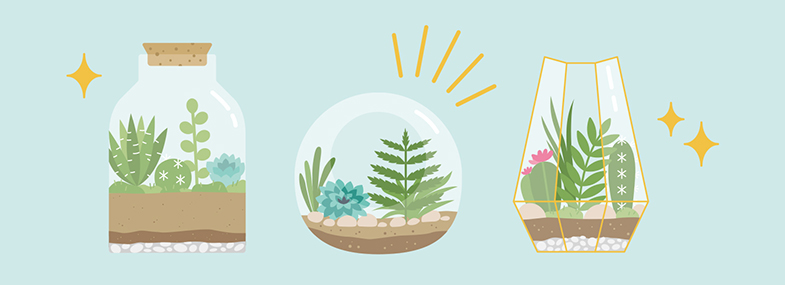
Terrariums are popular to make for lots of reasons; they look cool, they’re fun to make and they don’t have to break the bank. If you’ve never built a terrarium before (or just want to level up your skills) then there are a few hurdles you need to overcome.
It’s hard to create a terrarium that lasts without first understanding how they work. You won’t keep your terrarium alive if you fail to include all the necessary elements. And with all the design options it can be really hard figuring out which style you’d like to create.
But that’s why we’ve created this guide; to take you by the hand and teach you the basics of terrarium building. This guide won’t turn you into an expert, but it will help you get on the path to becoming an expert.
Whether you just want to create a quick project during lockdown or build a large number of them, this guide will teach you how to get started and provide lots of inspiration for your own projects.
We’ll start by taking a look at some of the benefits of creating your own terrariums.
The Benefits of Terrariums
If you’re at the very beginning of your journey with terrariums you may not be completely sold on why you would want to spend your time, money and energy on creating one. In this section, we’ll take a look at the five biggest benefits of terrariums.
Benefit #1: Space Requirements
With more people living in smaller spaces than ever before, more people are finding that traditional gardens are difficult to cultivate. If you find that you don’t have space for a proper garden, then maybe a terrarium is for you.
Building a terrarium can be done no matter what space you have available. They can be made as large or as small as you’d like. Some people have made terrariums out of lightbulbs, while others make them out of large Wardian cases (more on them soon!).
Benefit #2: Low Maintenance
While terrariums aren’t truly “set & forget”, they are still very low maintenance. If you like the idea of having greenery in your house but don’t like the idea of maintaining the plants, then terrariums are great.
Some can be left alone for long periods, while others only require a little bit of attention every so often. If you’re the type of person who forgets that they have a plant in their house then a terrarium might be the thing for you.
Benefit #3: Safe for Kids & Pets
Most plants aren’t toxic to kids and pets, but some are. So if you’ve got kids or pets around the house, having these plants isn’t really an option. After all, a cat can die just from drinking the water that lilies sit in, so these kinds of plants aren’t ones you want in reach.
Terrariums can change that though; since you can create closed systems (they are completely enclosed) you can put whatever you like inside and no one is getting at them.
Benefit #4: Easy to Do
While terrariums can look pretty complicated (especially if you don’t really understand how they work), they’re actually really simple to create. Understand the basics of how they work, figure out a design you’d like to create and then gather your ingredients.
You’ll learn how to do all of this in the sections below, so even if you aren’t entirely sure what a terrarium is you’ll be on track to create your first one after studying this guide for a little while.
Benefit #5: They Look Cool
This might be subjective, but most people would agree that terrariums look pretty cool. If the average terrarium doesn’t strike your fancy then you’re free to create something that does. This guide will provide you with plenty of inspiration if you’re not sure what can be done.
Whether you want something small and simple or something large and extravagant, you can do it with a terrarium.
Benefit #6: Low Cost
Not everyone has a huge budget to play with when it comes to hobbies. If a low budget has stopped you from getting into something before, you won’t have to worry about that happening when it comes to terrariums.
You can spend as much or as little as you like. Some people make terrariums out of stuff they have lying around the house, while others spend decent amounts of money on antique Wardian cases. There’s no right or wrong way to make them.
The History of Terrariums

The history of terrariums is more interesting and significant than you might imagine. To fully understand the story of the modern terrarium we need to travel back in time a couple of hundred years and meet an enthusiastic doctor from London.
Born in 1791, Dr. Nathaniel Ward was a physician who also had a passion for botany. In addition to his plants, he also collected moths which he stored in small glass bottles. One day he noticed that a fern seedling had started to grow in one of these bottles.
Interested, he had a case built out of wood and glass that he hypothesised could be sealed to the outside world, yet still be used to grow plants. After successfully growing ferns in this, yet unnamed case, he sat down and wrote a book titled On the Growth of Plants in Closely Glazed Cases.
While this book didn’t exactly set the literary world of London on fire, it was ahead of its time. You see, at the time, botanists were in a particularly dark place. It was the age of exploration; botanists were travelling all over the Americas, Africa, Asia and Australia finding new and exciting species of plants.
But at the same time, they weren’t having any luck bringing them back to Europe. Almost without exception the plants died on the ship back home, regardless of the methods used.
Enter our hero, Dr. Ward.
Using his connections, he organised for two cases filled with ferns to be shipped in Sydney. The ferns arrived in good condition and on the return trip, the cases were filled with the first Australian natives to make it back to England.
From this point onwards, word began to spread about the new Wardian Case and explorers took them with them all over the world.
It might sound like hyperbole, but it’s probably true to say that Wardian Cases changed the world by breaking geographical monopolies in industries such as tea. Before the Wardian Case, China had a monopoly on tea. In 1849 thousands of tea plants were smuggled out of China into India using Wardian Cases.
The scientific revolution might have taken a different path if it wasn’t for Wardian Cases either. Charles Darwin’s voyage on the Beagle gave him the inspiration needed for his theory of evolution. His imagination was stoked, in part, by the variety of plants brought back from around the world and these plants could not have been brought back without the Wardian Case.
Hopefully, this gives you a better understanding of where terrariums have come from and that when you’re building your own terrarium, you’re not just creating something cool, but something that actually changed the world as our ancestors knew it.
How Terrariums Work

If you’re like most people, you might be puzzled as to how terrariums work. After all, conventional thinking suggests that plants need fresh air and water. Yet as Dr Ward demonstrated, sealed ecosystems seem to work just fine.
But how do they work?
The hint is in the paragraph above. Most people can remember their lessons in primary school on the water cycle. That there’s a certain amount of water in an environment and that this water eventually evaporates into the sky, where it then condenses and finally precipitates.
A terrarium is simply a self-contained system like the ones we learned about in primary school. Water is released by the plants and soil, but rather than going high up into the sky, the water vapour collects on the surface of the container, where it condenses and then reenters the system again.
This is the crux of how closed terrariums work. These are typically suited for tropical plants that are used to higher levels of humidity.
Open terrariums aren’t closed and so are easier to understand. Rather than be part of their own ecosystem, open terrariums are part of the greater system. Plants that prefer a temperature climate tend to do better in open terrariums because of the lower humidity.
Which one you choose is going to depend on what sort of plants you want, but you’ll learn how to create your own terrarium step-by-step further on in this guide.
The Basic Ingredients of a Terrarium

Terrariums are pretty simple to put together, but before you can get started you will need to gather a basic list of ingredients. Here are some of the ingredients you’ll need.
Plants
This one should go without saying because you won’t have much of a terrarium without any plants. In the next section we’ll suggest a few popular types of plants to use in your terrariums
A Vessel
Just as you can’t really have a terrarium without plants, nor can you have a terrarium without a vessel. As well as selecting your plants, deciding on a vessel can be the most fun part of the process.
You’re really only limited by your imagination. Later in the guide, we’ll provide you with plenty of inspiration, but before you let your imagination go wild, there are a few things to keep in mind.
The first is to consider the size. Creating a terrarium from a lightbulb is going to be different from one made of a large container. You’ll need plants and other materials that are appropriate for the size.
Second, consider the rule of threes; this rule states that your base is no more than a third of the height of the vessel.
Third, consider the difficulty level of the vessel. Generally, the containers with narrow openings are much more difficult than the ones with wider ones. This is because moving things around the interior is much harder with chopsticks than it is using your hands. The last thing you need is for the design of the vessel to end up frustrating you in your efforts.
Moss
Moss isn’t a must-have for all terrariums, but it is a popular choice for many. If you choose to use moss then you’re generally better off using moss that grows on soil rather than the types of moss that grow on rocks.
Soil or Substrate
In addition to the above, you’ll also need to use some soil or substrate. You don’t have to get fancy when you’re trying to get your hands on some soil good. For the purpose of creating a nice terrarium, some potting soil from your local Bunnings will suffice.
Drainage Material
Beneath the soil, you’ll also want to place some drainage material. The purpose of this layer is to help drain away the water from the soil (where the roots sit) and prevent root rot. There are a few options when it comes to selecting the right drainage material.
Perlite is a popular option because it’s softer and therefore less likely to crack the glass vessel.
Some people also like to use a thin layer of charcoal between the soil and drainage layers so you end up with a filtering effect. This is good in closed terrariums where there’s no natural air exchange.
To keep the two layers divided, you’ll also need some filtering material; brown paper, coffee filters and cheesecloth are all popular options.
Tools
While some designs can be created with just your hands, if you’re using a vessel that has a narrow opening, you will need some tools to create the design you want.
Chopsticks are useful for making holes in the soil for placing elements. Thin scissors are handy for cutting plants if needed. Tweezers can be handy if you need to grab things inside of vessels that are too narrow for your hands. A misting bottle can be handy for the occasional watering that you’ll need to do too.
The Best Plants for Terrariums

When it comes to choosing plants for your terrarium, you have lots of options. That said, not all plants will work well in every terrarium, so it’s important to choose plants that match the vessel you plan on using.
One factor to consider is the height of the plant. While the growth of a plant will be limited by the size of the vessel, you’ll want to consider how the different sizes of plants go together in terms of design. Contrasting different heights is a good technique for creating really cool terrariums, as you’ll see later on.
Another factor to consider is the textures of the leaves of the plants you want to use. Rather than choosing plants that have similar textures, try and mix them up a bit and the resulting effect will be more interesting.
Variegation is another element you can play with when selecting plants. Variegation of course meaning leaves that have different regions of colour to them. When not overused, this can have a really great effect on the overall feel of the terrarium.
You’ll also want to use a mix of plants that grow upright and horizontally. Using plants that all grow one way tends to look a bit boring, so if you’re going to use lots of different sorts of plants, then mix up this dimension as well.
Finally, consider water and humidity preferences. You’ll want to match the vessel type to the preference of the plant. Closed terrariums are quite humid, so plants from the tropics tend to do the best here. Open terrariums, on the other hand, are less humid, so plants that are from temperate climates tend to grow best here.
With all that said, here are a bunch of the most popular plants used in terrariums to get your creative juices flowing.
Tillandsia (Air plants)
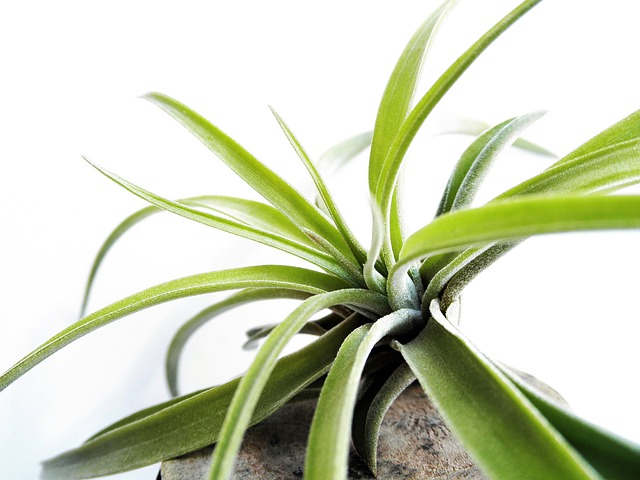
Staghorn Fern
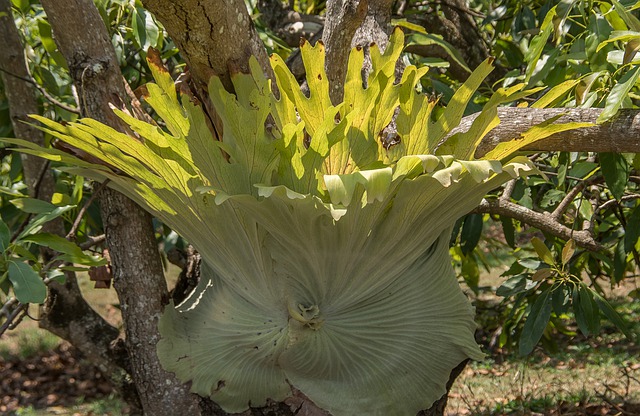
Selaginalla (Club Moss)

Cryptanthus
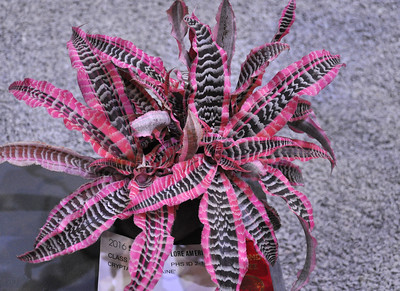
Ferns

Succulents

Peperomia
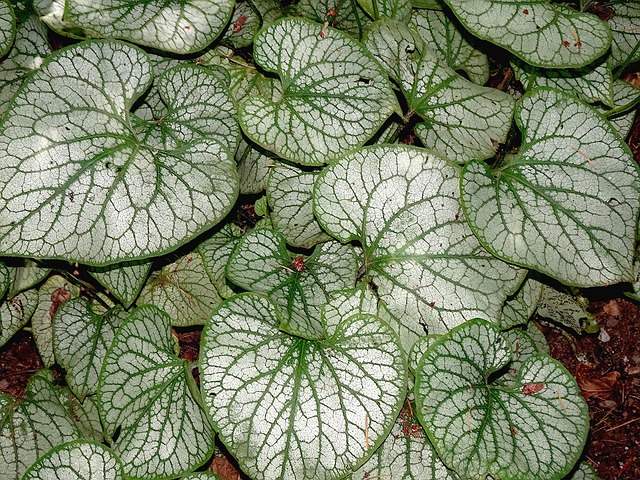
Your First Terrarium Step-by-Step
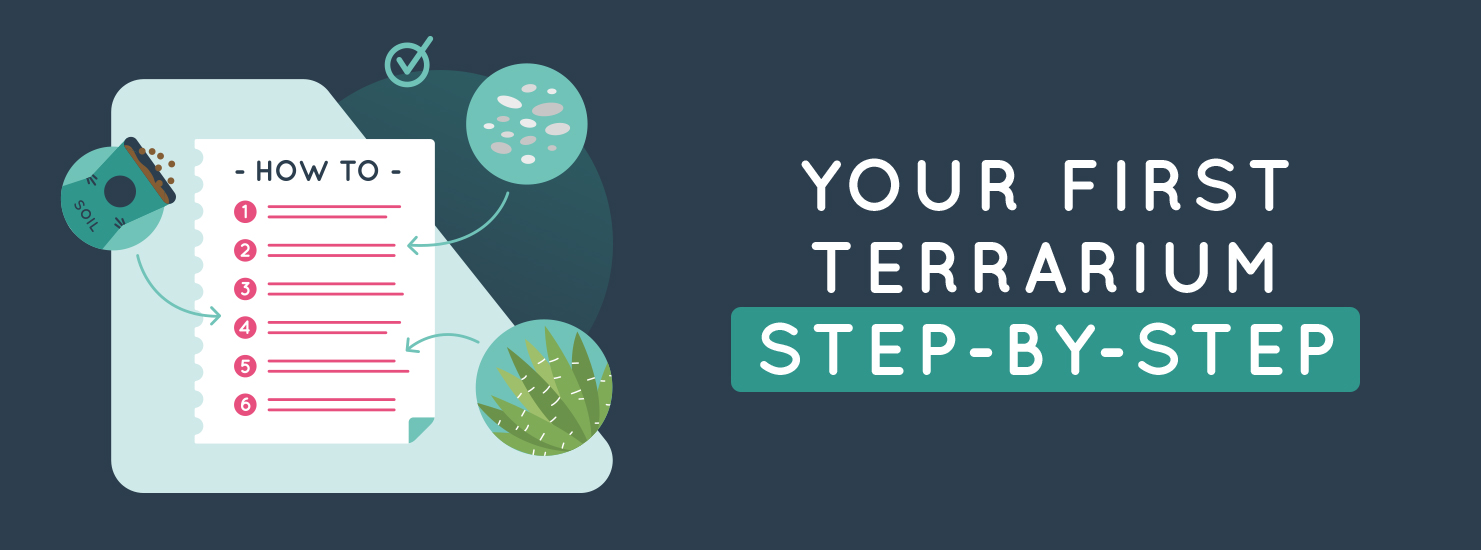
Even if you have a basic understanding of how a terrarium should work, getting started with your first one can be a little daunting. So if you’re ready to get started with your first one but are still a little unsure of the steps, this section is for you.
Step 1: Create the Vision
The first thing you need to do is create the vision of what you want your terrarium to look like. Take some time and look at lots of other designs to figure out which ones resonate with you.
Once you’ve decided on what you want the end product to look like then you can move forward to step two.
Step 2: Select your Plants
The next step is to select the plants that match your vision. Remember that they should match your aesthetics, be similar in water and light requirements as well as prefer the same levels of humidity.
Step 3: Assemble the Ingredients
Next, you’ll need to get your hands on all the ingredients needed for your terrarium. Buy your plants, find the vessel that you want and get a hold of the other bits and pieces that you’ll need.
Step 4: Place Drainage Material
Now that you have all the materials that you need it’s time to start working on the actual terrarium. The first step is to place the drainage material at the bottom of the terrarium.
Step 5: Add Separation Layer
Next, you’ll want to add the separation layer on top of the drainage material.
Step 6: Place Activated Charcoal (optional)
This next step is optional but if you’re going to be using charcoal to separate the different layers in your terrarium then this is the time to do so.
Step 7: Add Soil
Now add the rest of your soil, which is where the plants will be sitting and growing.
Step 8: Add Plants & Dress Off
Finally, add your plants and dress them off so that they’re sitting nicely.
Maintaining your Terrarium
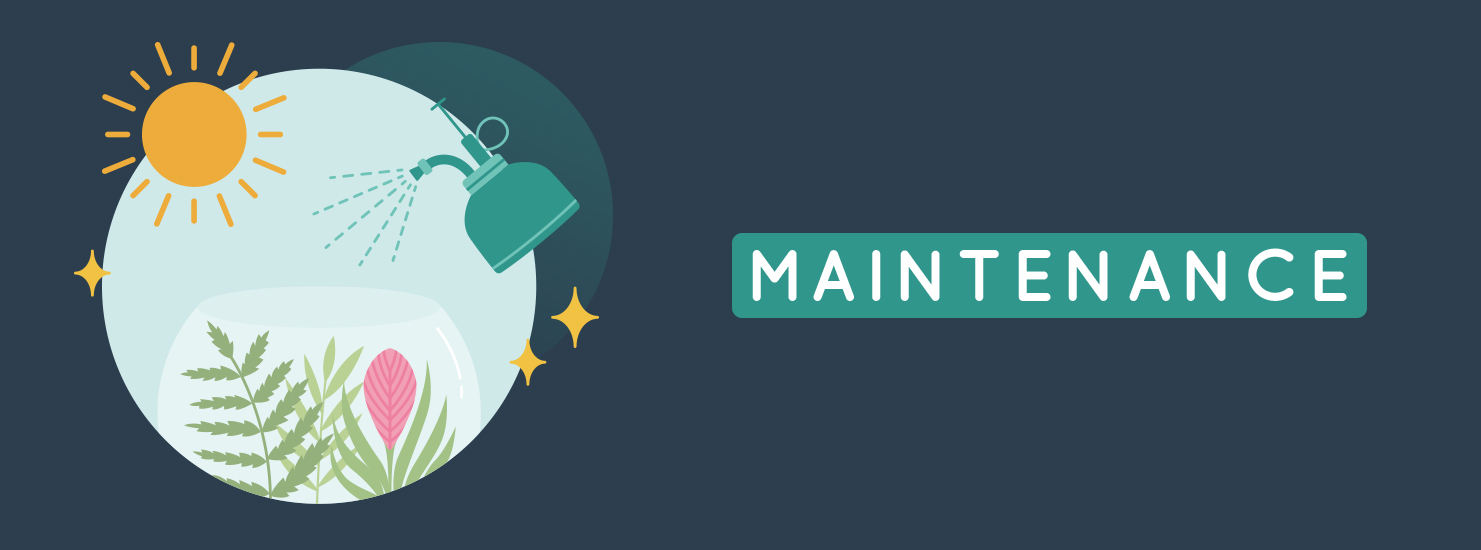
Once you’ve put your terrarium together you’ll want to make sure that you’re able to take care of it properly. While terrariums are pretty easy to take care of there are a few things you need to understand and a few tasks you need to perform from time to time.
The first is light requirements. As terrariums involve plants, light is a must. One difference from growing plants in a garden is that terrariums are surrounded by glass and therefore the air inside gets hotter than the air outside. It’s the same reason why sitting inside a car on a hot day can be dangerous.
Because of this, you’ll want to keep your terrariums out of direct sunlight. Often the best place to keep your terrarium is near a window, but not in a window sill itself. Plants that require full sun are generally not ideal for terrariums.
Next up are water requirements. Many people don’t realise this, but overwatering is just as harmful to your plants as underwatering. It’s also the easiest way to kill your terrarium. Because there’s no drainage, your terrarium loses moisture very slowly.
Therefore it’s important to group your plants by similar water requirements. What is too much for one plant might be too little for another. Don’t pour water into terrarium because this will rot the moss (if you’re using it), drown the plant and possibly cause mould.
If you’re using a closed terrarium, use a misting bottle with water and once a week spray it about 15-20 times inside the vessel. Ideally, the plants will be damp to the touch, but not really wet.
As your terrarium becomes more established and the cycle goes on this will be needed less often. What determines how often you’ll need to do this will be your climate.
Plants also naturally seek out light, so depending on where you put the terrarium, you might want to rotate it from time to time. You’ll know this is the case if a plant starts growing to one side.
Mealybugs can also be a problem; if you see a white cottony substance under the leaves then you might have an infection. If you see them, rub alcohol on a cotton swab and run it over the insects. If the infection is too bad then you might have to remove the plant altogether.
Yellow leaves reflect dry soil. If you start to see lots of yellow leaves you might want to remove them because the leaves are generally permanently damaged. Dried or dead leaves are caused by the sun being too strong, so if this is something that comes up in your terrarium, you’ll want to move it somewhere where the light is a bit weaker.
Terrarium Design Ideas
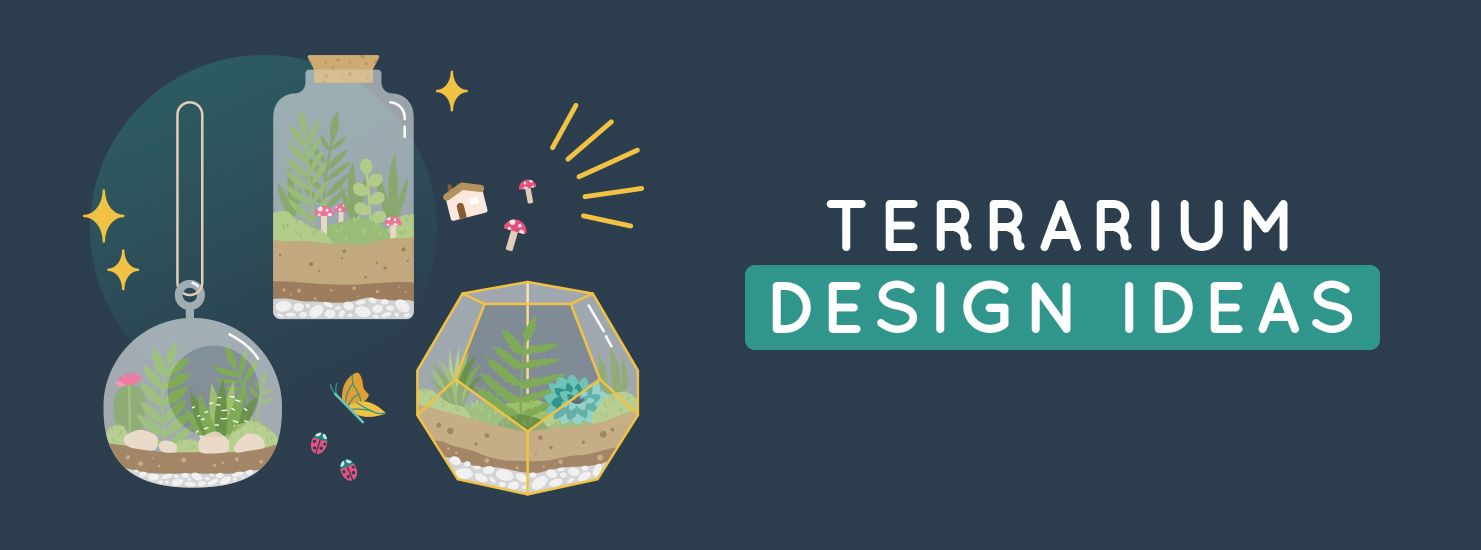
When it comes to designing your own terrarium, you’re only limited by your imagination. And your imagination can only really help if you’ve been exposed to lots of designs in the past.
So in this section, we’re going to introduce you to as many different and cool designs as possible. Not all will be to your taste, but you’re sure to find something there you like.
Light Bulb Terrarium
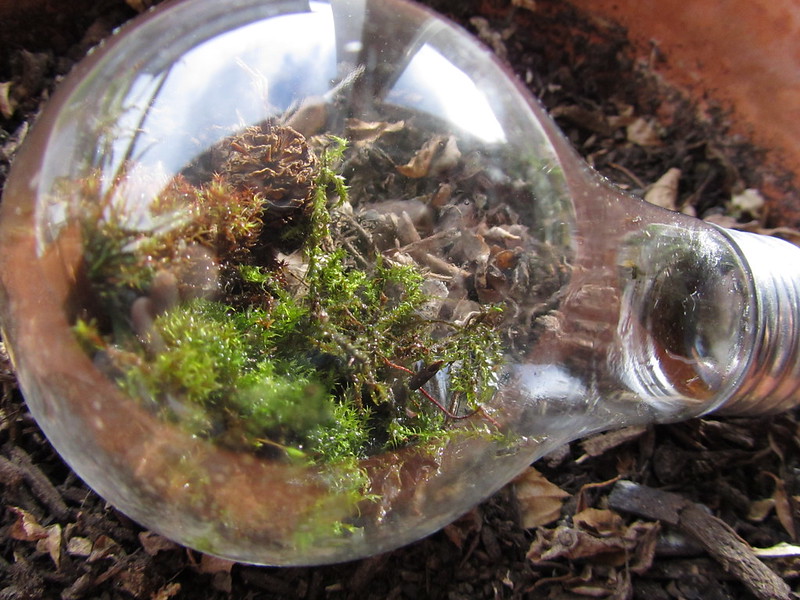
Glass Terrarium
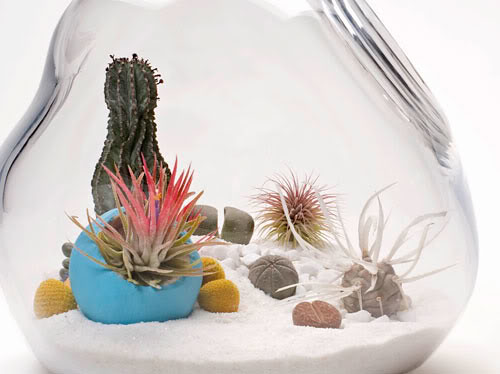
Moss Terrarium

Hanging Terrarium
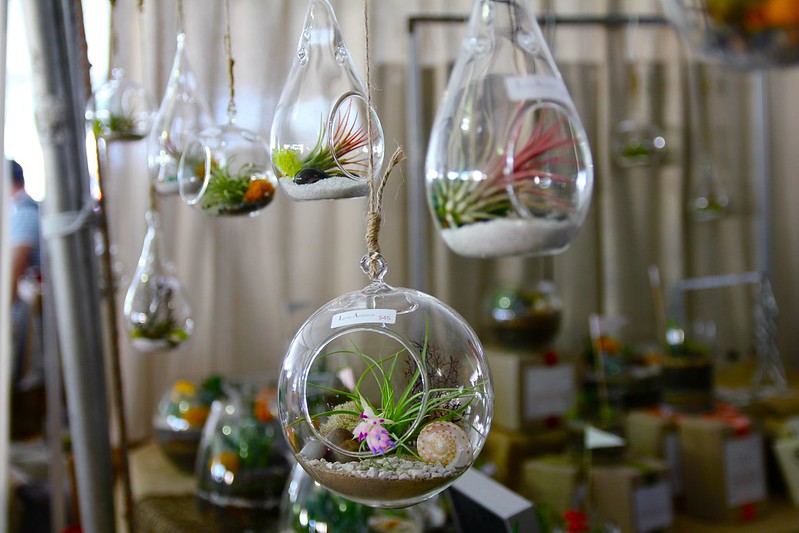
Greenhouse Terrarium
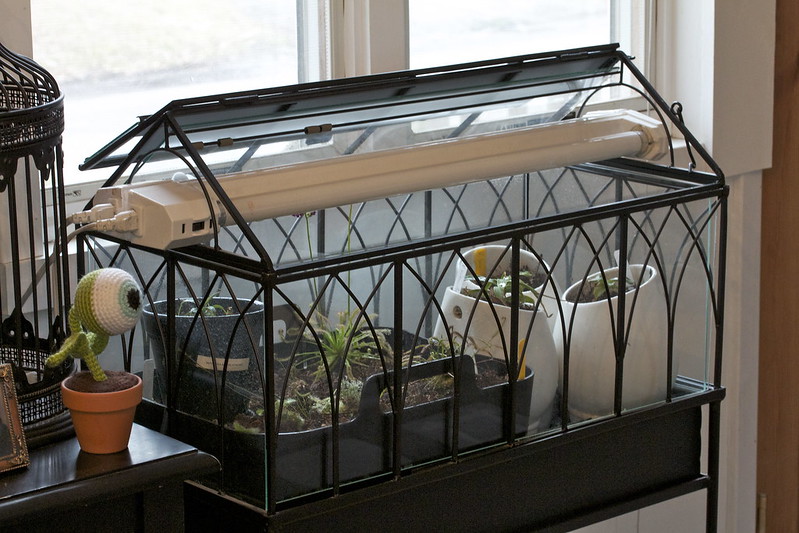
Cactus Terrarium
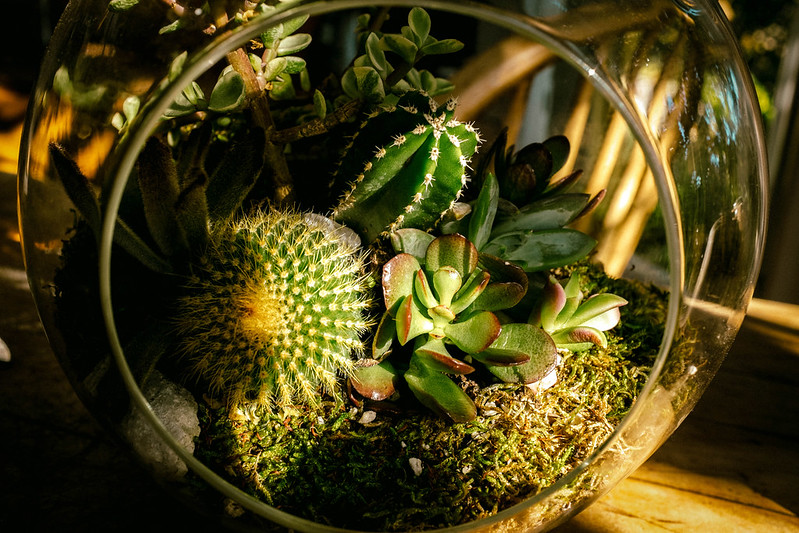
Dinosaur Terrarium
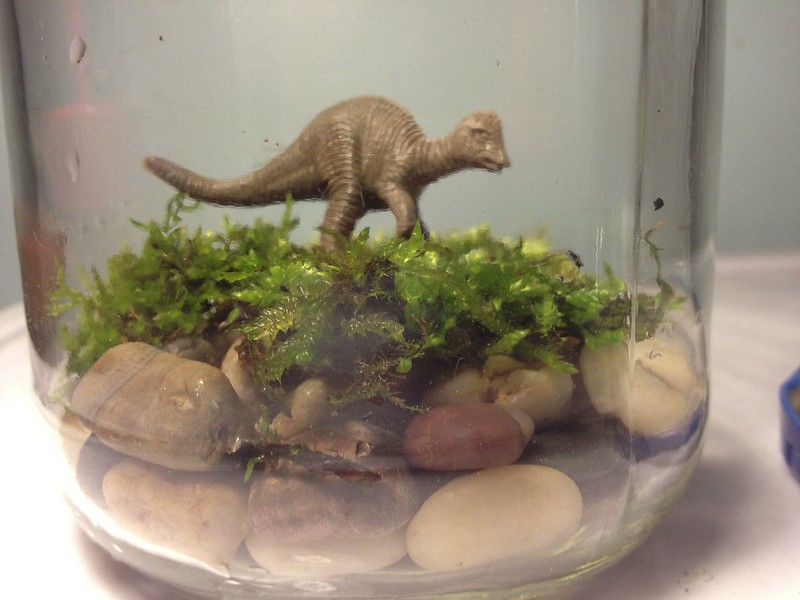
Mason Jar Terrarium
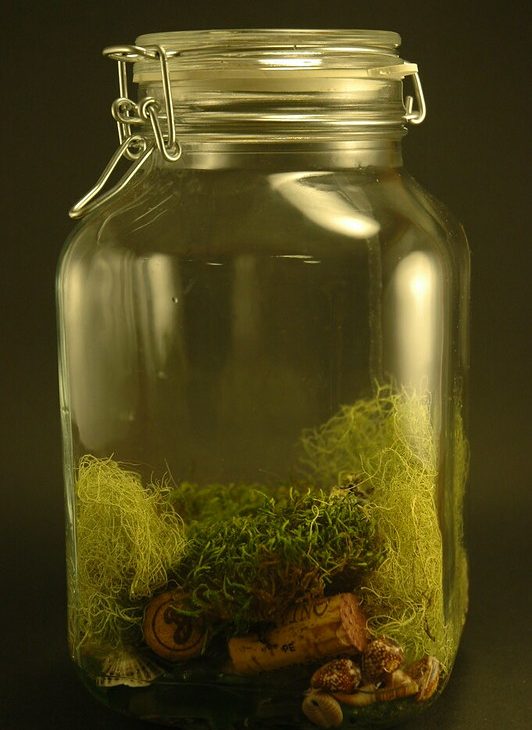
The Best Terrarium Resources

If you want to start down the path of creating your own terrarium then you might not know where to start. If you’d prefer to just buy a pre-made one, then we, of course, have to plug our own Flowers Across Melbourne terrariums, but if you’d prefer to create your own from scratch then here are some links you might find handy:
In the United States
In Australia
In Canada
In the UK
Frequently Asked Questions

Although we’ve done our best to present you with the best guide on building a terrarium, there are always questions that we haven’t managed to answer for you. If you have any questions for us after reading this guide, ask them in the comments section below and we’ll add the answer here in the FAQ section.
Do terrariums smell?
Generally, terrariums don’t smell. If you’ve done everything right then they should actually smell quite nice; just like a small forest. If your terrarium smells bad then it’s probably a sign that something has gone wrong.
Do terrarium kits work?
It depends on which kit you buy, but the good terrariums kits do work. If you’re unsure of which kits to go with, you can check the links in the recommended resources section above.
Do terrariums get infected with pests?
Terrariums can get infected with pests. Closed terrariums have the advantage of not allowing anything in, but if pests are there (without you realising) when you seal the container, then you can end up in a bit of trouble. They can be dealt with the same way as dealing with pests normally.
Do you have to water terrariums?
Early on in a terrarium’s life you still will need to add a bit of water from time to time. As the environment stabilises over time though you’ll be able to spend less time watering though. At the beginning, a few sprays with a misting bottle should do the trick.
Do terrariums need sunlight?
It really depends on the types of plants you have inside. Plants require the sunlight they need regardless of whether they’re inside a container or not. One thing to note is that because closed terrariums amplify the light they receive (like being stuck in a car on a hot day) that it can be easy to overheat the terrarium.
Do terrariums need to be airtight?
Closed terrariums work best when the seal is airtight as this allows for a complete ecosystem to be set up inside. This is best for plants that require higher humidity levels than you may have in your own climate.
Do terrariums make good gifts?
Terrariums certainly do make good gifts, which is why we sell them!
Final Thoughts
That’s all we’ve got for you on the subject of terrariums. I hope that helps you get started with a terrarium of your own and gives you plenty of inspiration as to what’s possible.
Do you have any questions?
Is there anything else you’d like to know?
Let us know in the comments!
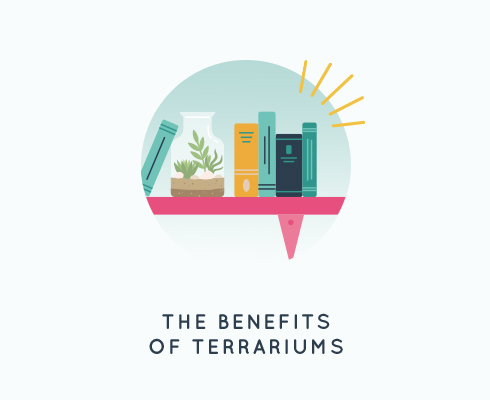
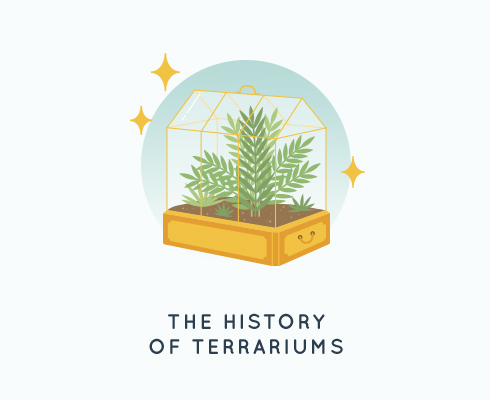
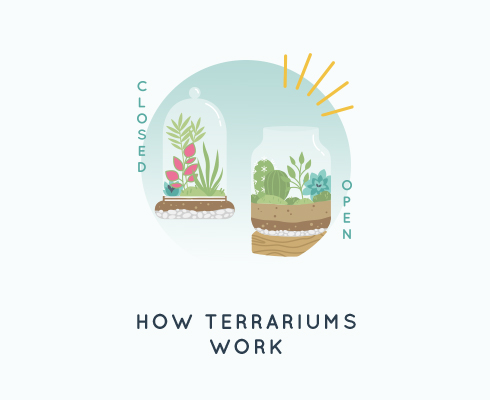
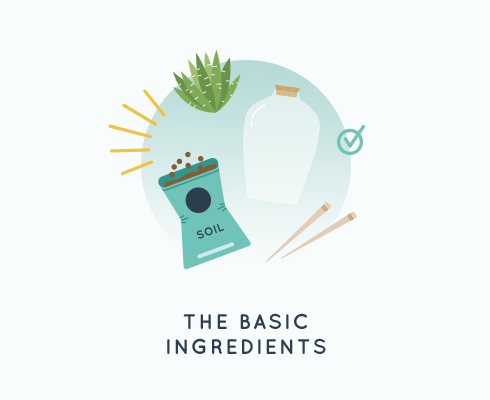
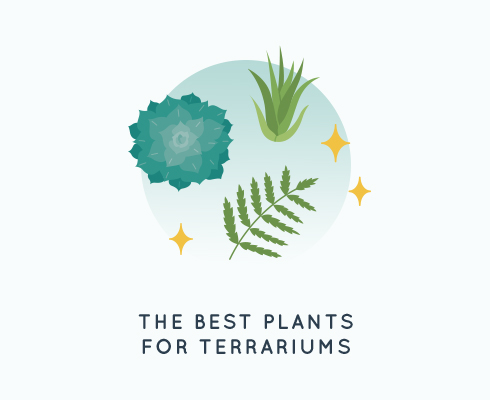
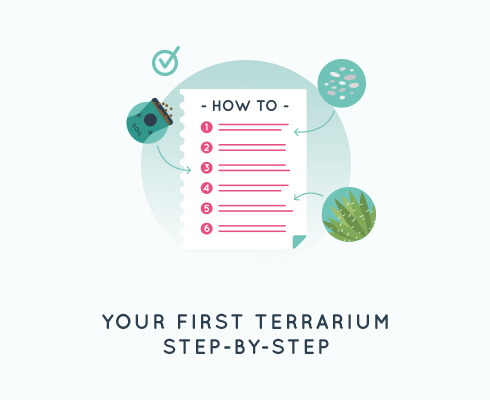
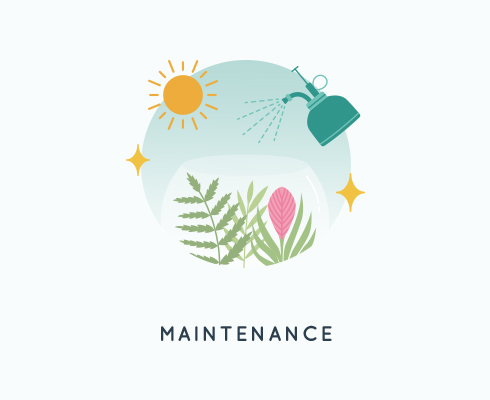
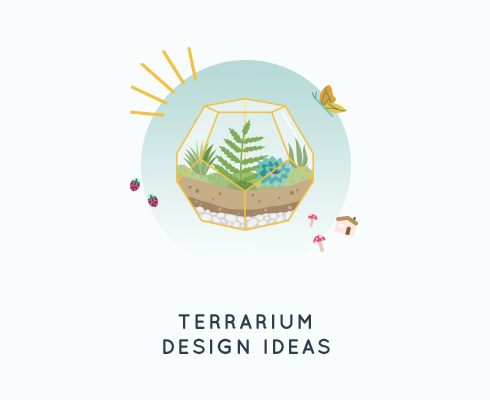
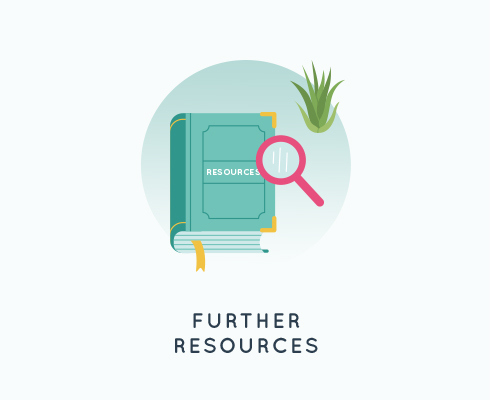
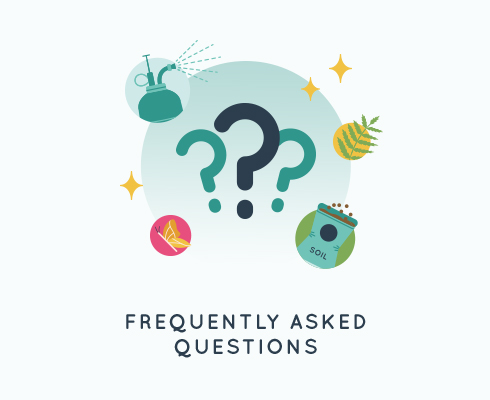



Comments are closed.